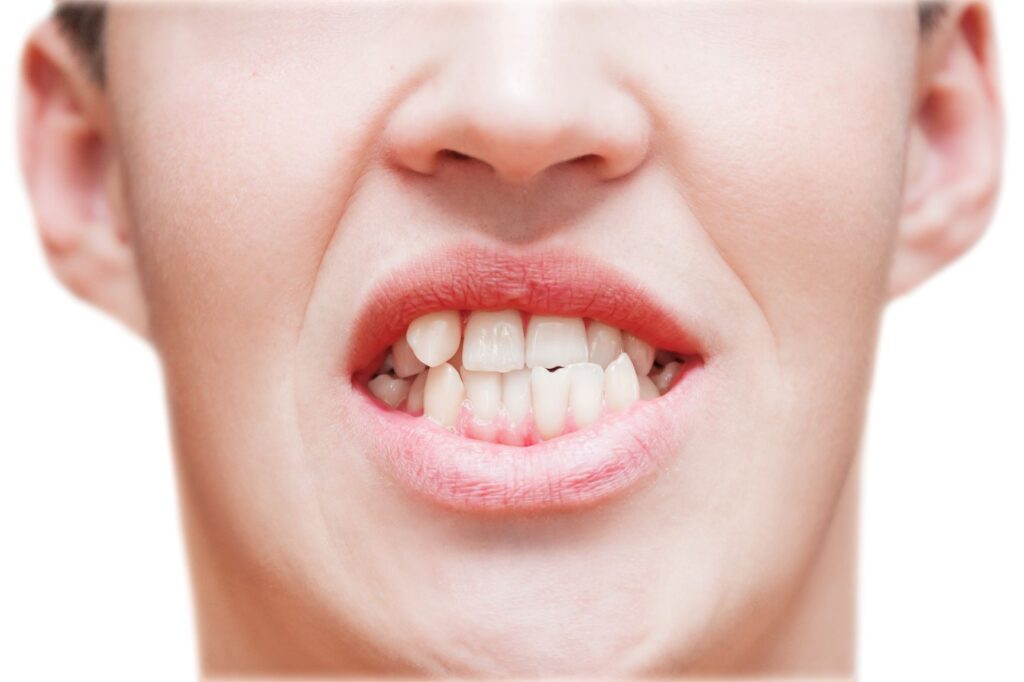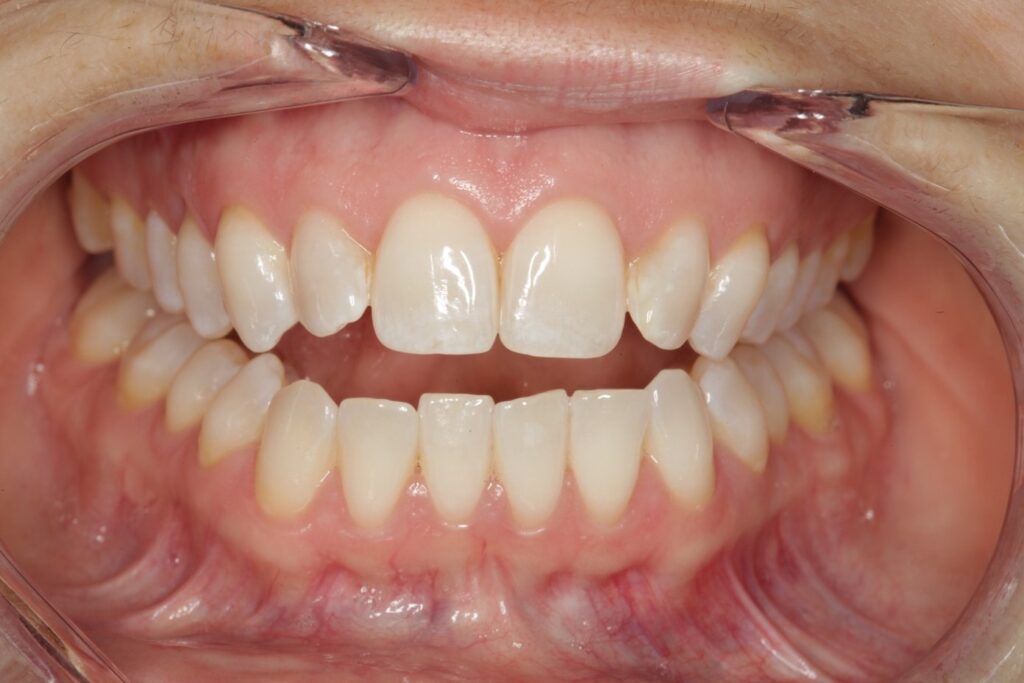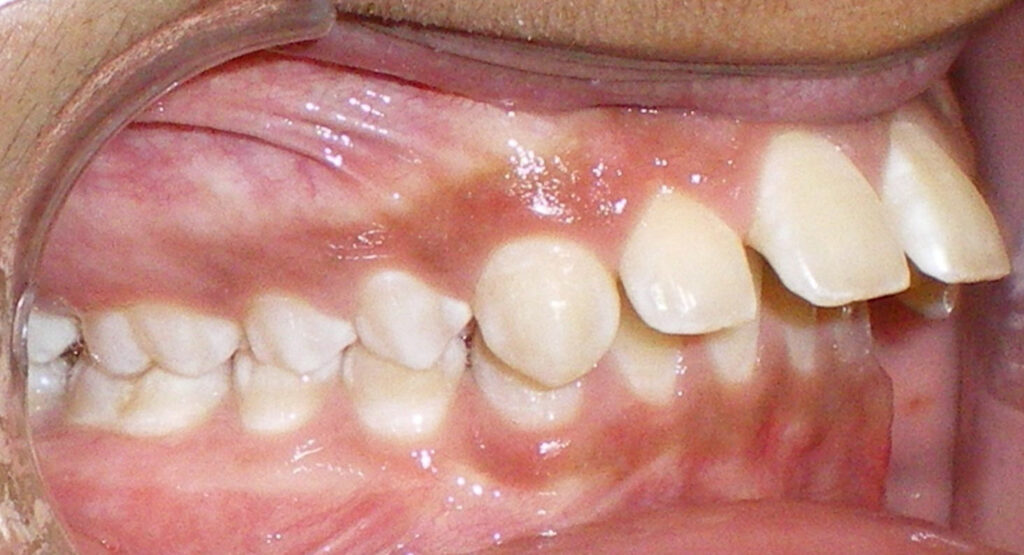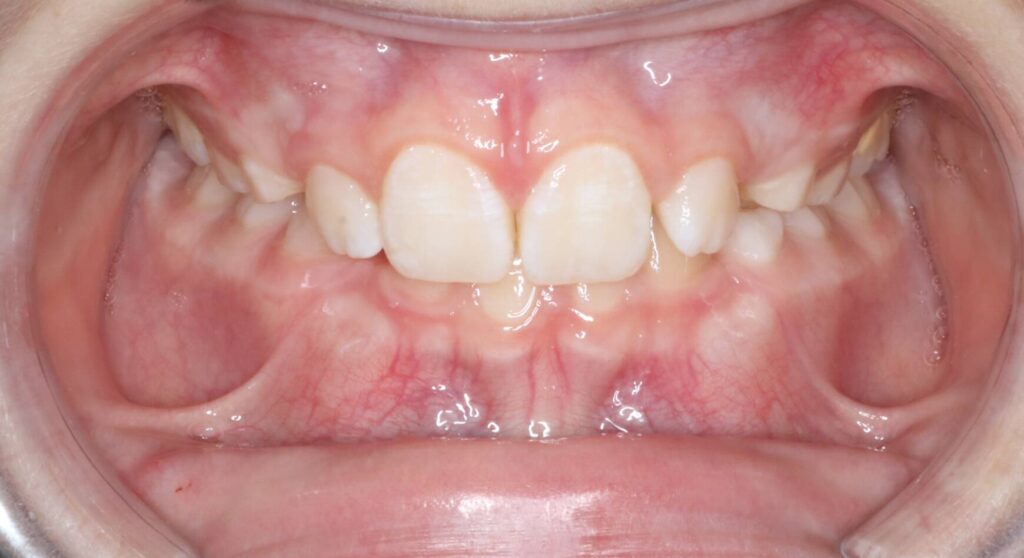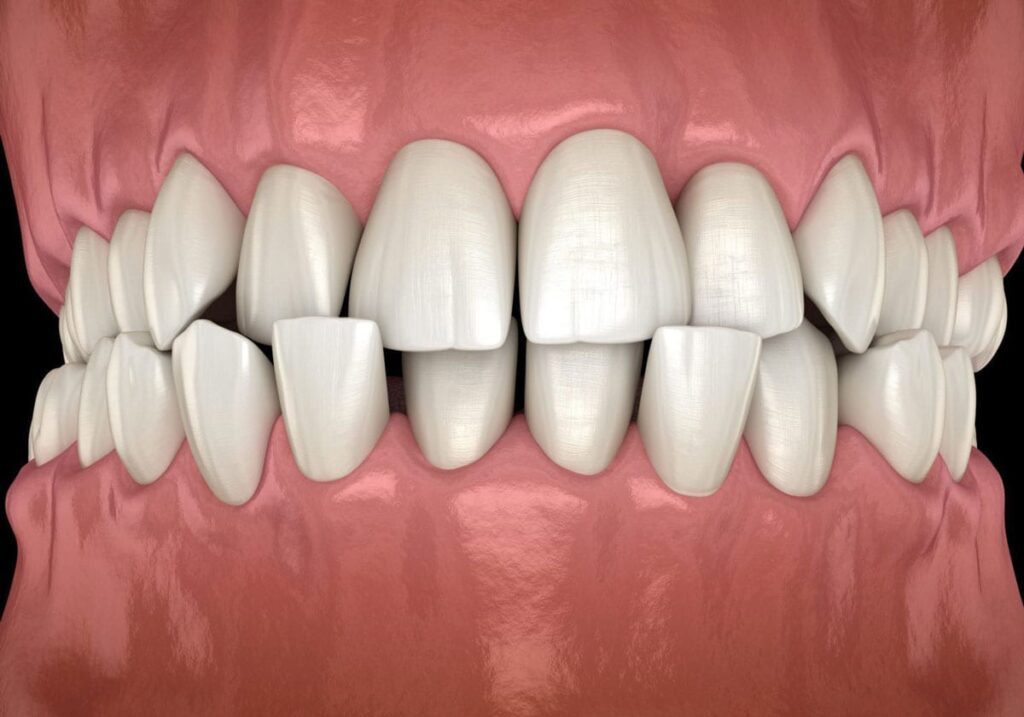TYPES OF MISALIGNED TEETH
WHAT IS MALOCCLUSION?
The abnormal alignment or misalignment of the upper and lower teeth is known as malocclusion.
CAUSES OF MISALIGNMENT
Most malocclusions are due to inherited conditions, they also occur due to some habits.
Some common causes are:
- Early tooth loss
- Loss of a permanent tooth
- Prolonged thumb or finger sucking
- Bottle feeding
- Prolonged use of the pacifier
- Impacted tooth
- Lack of oral care
- Injury and trauma
- Airway obstruction
- Cleft lip and palate
SYMPTOMS
- Malocclusion can vary from:-
- Irregular alignment of teeth
- Inability to chew properly
- Biting cheek frequently
- Speech problem
- Change in appearance of the face
- Breathing from the mouth instead of the nose.
CLASSIFICATION OF MALOCCLUSION

The teeth and jaw should be in proper alignment to prevent bites on the cheek, lip, and tongue. The teeth of the upper jaw should slightly overlap the teeth of the lower jaw. If there is a misalignment, it will result in a malocclusion. Malocclusion is classified into three types:
CLASS 1 MALOCCLUSION
It’s the most common type where there is overcrowding or spacing between the teeth, but there is no difficulty in biting.
CLASS 2 MALOCCLUSION
It is known as an overbite. This involves severe overlapping of the upper teeth and jaw.
CLASS 3 MALOCCLUSION
This type of malocclusion takes place when the lower jaw is larger than the upper jaw, causing the teeth of the lower jaw to be more visible.
TYPES OF MALOCCLUSION
OVERCROWDING OR CROWDED TEETH
Overcrowding or dental crowding is a common misaligned teeth condition typically caused due to a lack of space resulting from overlapping or crooked teeth. Dental crowding is one common issue that arises when teeth don’t grow properly aligned. Due to genetic issues in jaw size or other external factors, the teeth compete for space while they grow in, pushing them up in unnatural, crooked positions. It can lead to a variety of problems. It’s important to treat crowded teeth with effective orthodontic care to prevent tooth decay or other issues.
CAUSES
- Losing of baby teeth early.
- Extra adult teeth.
- Large teeth size.
PROBLEMS RESULTING FROM DENTAL CROWDING
- Poor oral hygiene.
- Cavities or dental caries.
- Gum problems.
- Embarrassment with a smile.
- Trouble chewing or biting.
TREATMENT
- Braces.
- Clear aligner.
- Extractions.
- Retainers.
SPACING
Misaligned teeth in which there is more space in between teeth. The gap in between can also cause due to certain habits in childhood like thumb sucking and tongue thrusting.
CAUSES
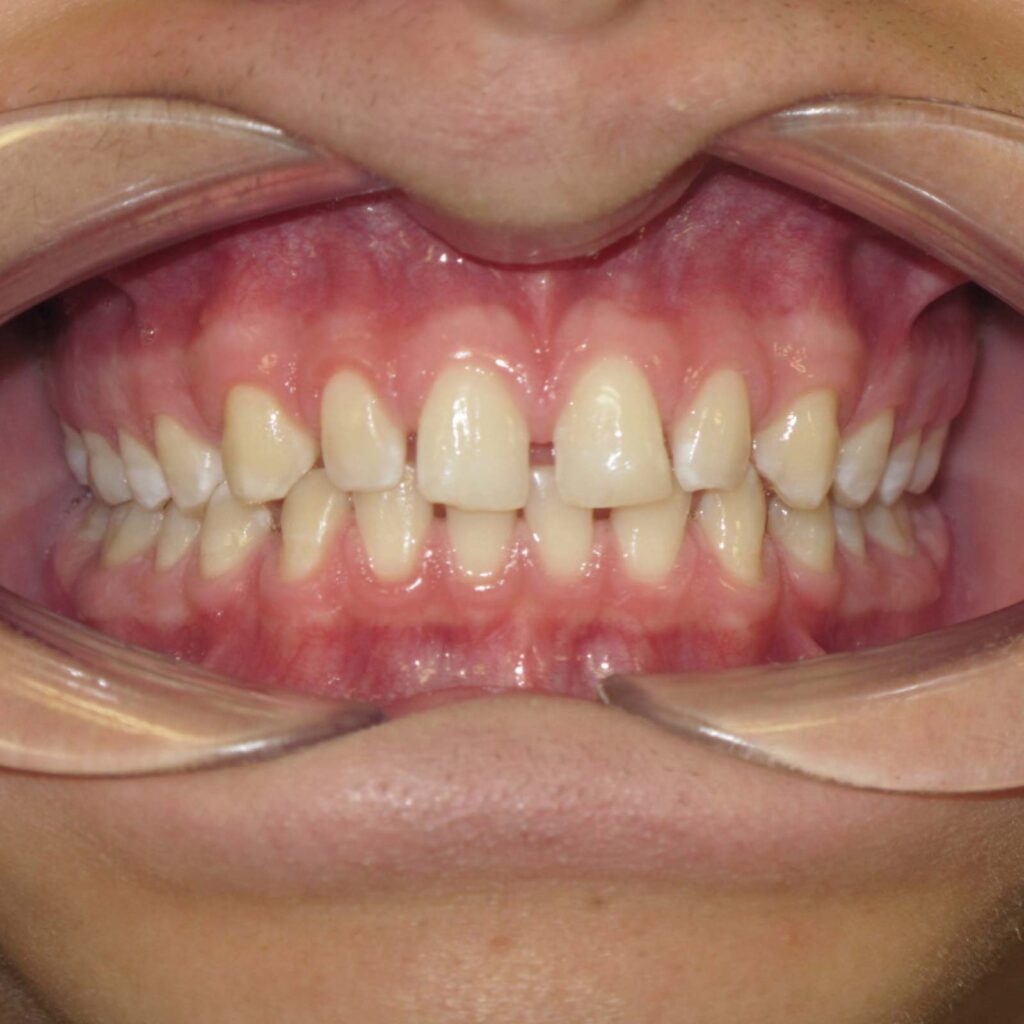
- Oral bad habits.
- Gum problems.
- Missing tooth.
- Protruding teeth.
- Big jaw size.
PROBLEMS RESULTING FROM GENERALIZED SPACING
- Speech difficulty.
- Protruding of teeth.
- Embarrassment to smile.
- Difficulty in closing lips due to protrusion of teeth.
TREATMENT
- Orthodontic braces treatment.
- Orthodontic clear aligners.
- Direct & indirect veneers.
- Crowns & Bridges.
OPEN BITE
Type of malocclusion When the upper & lower front teeth do not overlap each other, it results in the formation of an opening that leads straight into the mouth. The problem of an open bite can also occur on the sides of the mouth. There are 4 types of open bite like dental open bite, anterior open bite, skeletal open bite, posterior open bite.
CAUSES
- Thumb sucking.
- Pacifier sucking.
- Tongue thrusting.
- Temporomandibular joint disorder.
- Skeletal problem.
PROBLEMS RESULTING FROM OPEN BITE.
- Abnormal bite patterns.
- Overcrowding of teeth.
- Mouth breathing.
- Discomfort or pain when biting or chewing.
- Speech impediments including lisps.
- Abnormal facial appearance.
TREATMENT
- Orthodontic braces treatment.
- Clear aligners.
- Orthognathic surgery.
OVERJET
A common type of malocclusion is when the upper teeth protrude outward and sit over the bottom teeth. Having an overjet affects both appearance and difficulty in chewing. Some overjets are mild rarely noticeable, while others are severe. It is normal for your upper front teeth to rest slightly in front of your lower teeth ( 2mm) when closing the mouth.
CAUSES
- Thumb sucking.
- Tongue thrusting.
PROBLEMS RESULTING FROM OVERJET
- Protruding of teeth.
- Difficulty in closing lips.
TREATMENT
- Dental braces.
- Clear aligners
- Veneers.
OVERBITE OR BUCK TEETH
Overlapping of the lower front teeth is natural but when the upper front teeth are biting down right into the gums, and increased overbite or deep bite is caused where the lower front teeth can also bite into the roof of the mouth.
CAUSES
- Thumb sucking.
- Pacifier sucking.
- Tongue thrusting.
- Genetics.
- Missing teeth, extra teeth, & impacted teeth.
PROBLEMS RESULTING FROM DEEP BITE.
- Speech difficulty.
- Breathing issues.
- Chewing deficiencies.
- Damage to other teeth & gums.
- Pain when chewing & biting.
- The difference in face.
TREATMENT
- Braces & retainers.
- Palate expansion.
- Clear aligners.
- Jaw surgery.
CROSSBITE
Type of malocclusion can happen on either or both the sides of the jaw when the upper front teeth are biting the right side of the lower teeth. The condition can also affect your front or back teeth. There are two types of crossbite :
ANTERIOR CROSSBITE OR FRONT TEETH.
It refers to the group of teeth in the bottom front of your mouth fitting over the teeth of your top jaw.
POSTERIOR CROSSBITE OR BACK TEETH.
It refers to the group of lower teeth toward the back of your mouth fitting over the teeth in your top jaw.
CAUSES
- Tooth decay.
- Difficulty speaking or forming certain sounds.
- Pain in your jaw, neck, and shoulder muscles.
- Temporomandibular joint disorders.
PROBLEMS RESULTING FROM CROSSBITE
- Teeth grinding.
- Irregular wear to the enamel.
- Loss of teeth.
TREATMENT
- Dental braces.
- Clear aligners.
- Palatal expanders.
- Cross elastics.
- Surgery.
UNDERBITE
An underbite is a misaligned teeth condition when lower teeth extend outward forward than the upper front teeth. It is also called prognathism.
CAUSES
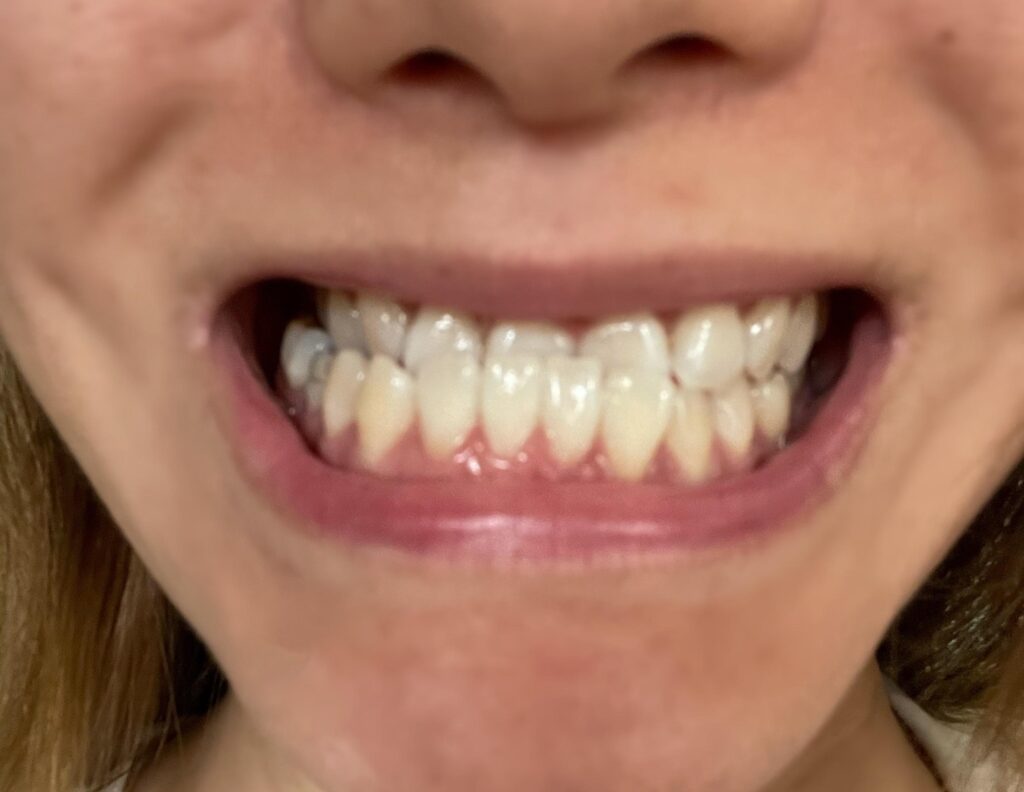
- Thumb sucking.
- Pushing on teeth with the tongue.
- Pacifier use.
- Long-term feeding bottle.
- Genetics.
- Injury.
PROBLEMS RESULTING FROM UNDERBITE
- Difficulty biting and chewing food.
- Mouth and face pain due to misalignment of the jaw.
TREATMENT
- Metal braces.
- Clear aligners.
- Reverse-pull face mask.
- Upper jaw expander.
- Tooth extraction.
- Surgery.
DIASTEMA OR GAP IN FRONT TEETH
Misaligned teeth in which a person with diastema (midline diastema) has a space or gap between two upper front teeth (maxillary central incisors)
CAUSES
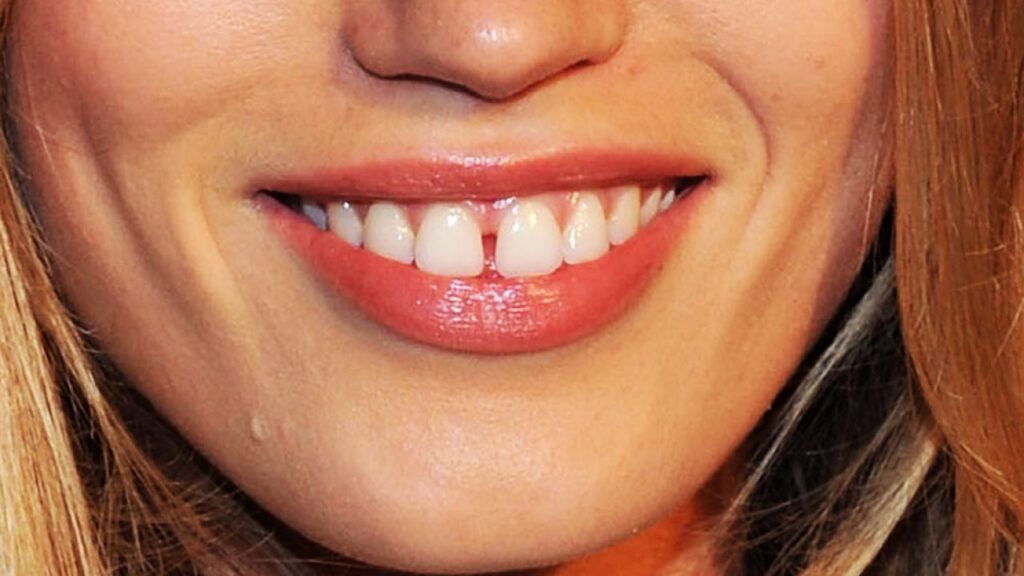
- Size of the teeth.
- Missing or undersized teeth.
- Oversized labial frenum.
- Gum disease.
- Habits.
TREATMENT
- Metal braces.
- Clear aligners.
- Dental implants.
- Surgery.
IMPACTED TOOTH
A condition in which the tooth fails to fully grow out ( erupt ) from the gums. Impacted teeth usually occur because of crowding or lack of space in the bone. The most commonly impacted tooth is third molars and upper ( maxillary ) canines.
CAUSES
- Dental trauma.
- Over-retained baby teeth.
- Irregular tooth growth.
- Supernumerary teeth.
PROBLEMS RESULTING FROM IMPACTED TOOTH
- Tender, red, swollen gums.
- Difficulty opening the mouth.
- Pain when opening or closing the jaw.
- Persistent headaches.
- The gap between teeth where the tooth should emerge.
- Bad taste in the mouth.
- Bad breath.
TREATMENT
- Open eruption.
- Closed eruption by the orthodontist.
TREATMENT OF MALOCCLUSIONS
These can be removed and are transparent that work the same way as dental braces, without affecting the way you smile. Most patients opt for clear aligner as they are easier to wear and there are no food restrictions and easy to maintain oral hygiene;
FIXED MULTIBRACKET BRACES
This is when brackets are attached to each tooth and are connected with the help of a wire. The wire is changed regularly to gradually bring the teeth into proper alignment.
REMOVABLE DEVICES
The removable devices include retainers and headgear. Retainers hold the teeth in the right position so that the jawbone is allowed to grow properly around it.

